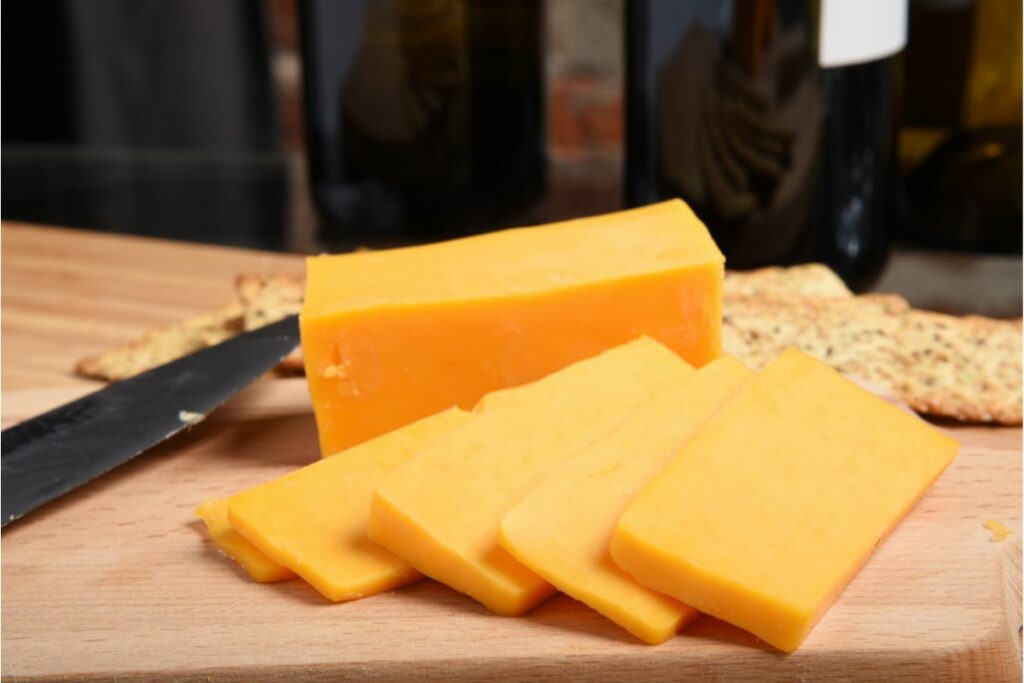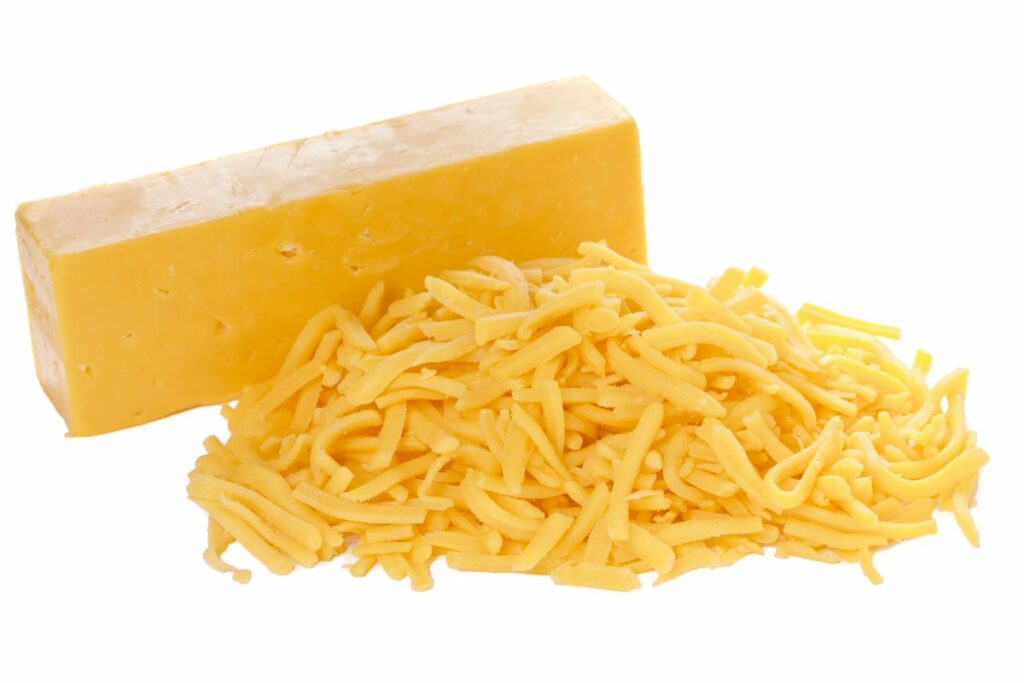Quick Answer: How to Melt Cheddar Cheese in the Microwave?
Chop, slice or shred the cheddar cheese, put it in a microwave-safe container and let it rest. Then over with a vented lid and melt on low for 15 seconds.

Stir it, then melt again for a further 15 seconds, and stir and repeat to get the perfect melted cheddar cheese!
Cheddar cheese can be a particularly flavorful ingredient that’s versatile enough to be applied to a wide range of yummy dishes.
And if you ask me, it tastes even better when it’s melted!
There’s even science behind it – when cheese is warmer, the fat molecules relax more, thus releasing more flavor.
Melted cheddar is great over nachos, or as a dip for cheese fondue, or stirred into soups, or even as a sauce in its own right.
And since every good kitchen has a microwave, it makes sense to learn how to melt your cheddar cheese in this very safe and convenient way.
It can be tricky, though, getting the perfect temperature and timings, etc. But by reading this article, you can get the perfect melted cheddar in no time at all.
Coming Up
This article is going to give you easy-to-follow, step-by-step instructions on the perfect way to melt cheddar cheese in the microwave.
But before we get onto that, I’ll lay out some of the details, such as equipment needed. And after the technique walk-through, I’m also giving you a long list of top tips, including how best to store the melted cheddar cheese.
And without further ado, let’s get straight to it!
What You Need For The Perfect Microwave-Melted Cheddar Cheese
Here’s a walk through of everything you’re going to need for your microwave-melted cheddar cheese, including both the ingredients and the equipment.
Microwave
The process for melting cheddar cheese in the microwave is pretty much the same whatever microwave you use, regardless of the microwave’s wattage.
The perfect microwave would allow you to select a specific temperature, but unfortunately, most microwaves do not offer this option, and you will simply have to select the lowest power setting.
This is particularly valuable if you happen to have a high wattage microwave.
Microwave-Safe Container
You will need a microwave-safe container. This could, for example, be a ceramic bowl, or a Pyrex dish. Do not choose a plate because the melting cheese could drip off the plate.
Cheddar Cheese
The Cheddar cheese has to be in very small pieces for best effect.
I strongly recommend using a mild cheddar cheese rather than a sharp one, because a milder one will produce a smooth and creamy result, due to its higher moisture content.
(Sharper cheeses, which are more mature, have aged more, and this means that they have lost moisture over time, making them more dry and crumbly.)
It is possible that you could get a really good result with a sharp cheddar cheese, but you would really struggle if you were to use an extra-sharp or seriously sharp one.
Optional Milk Or Cream
You don’t have to add milk or cream if you don’t wish to. If you’re happy with the consistency of your melted cheese, then there’s no need to add anything else.
Personally, I like to add some because it provides a lovely, creamy texture. It also helps to speed up the melting as well.
Spoon
You will need a spoon for repeated stirring. A teaspoon or a dessert spoon should be fine.
Knife Or Shredder
As the pieces of cheddar cheese should be as small as possible, you will need to break up your block of cheese into smaller pieces.
(I don’t recommend using packaged cheddar cheese because they often have preservatives such as cellulose or potato starch to prevent sticking in the packet.
Vented Lid
A lid will help the melting cheese to retain its moisture, and prevent splashing. A vented lid is better, however, since this allows some steam to escape, thus preventing your food getting too soggy.
Oven Mitts
Since you will need to stir the melting cheese as soon as the microwave pings, you’ll have to be careful with handling the microwave-safe container.
To that end, you could wear oven mitts for removing the bowl, or alternatively, hold the bowl through a tea towel.
How To Melt Cheddar Cheese In The Microwave Instructions

Now, let me walk you through what you need to do for your perfect melted cheddar cheese, step by step.
Step One – Prepare The Cheddar Cheese
Although your cheddar should be at room temperature before melting in the microwave, it needs to be sufficiently cool for easy slicing or shredding, so I recommend that you either keep the cheese in the refrigerator beforehand, or alternatively, put your block of cheese into the freezer for a few minutes beforehand.
Preparing the cheese for melting requires getting it into lots of small pieces. This is because it helps to spread the heat over a greater surface area, which in turn helps to make the cheese melt more quickly.
The absolute best way to shred your cheddar cheese for melting is to shred it. When shredded with a grater, a 6 ounce block of cheese will give you approximately one and a half cups of shredded cheese.
If, however, you’re not lucky enough to own a grater, then you can instead simply cut your block of cheddar cheese into cubes, or simply make very fine slices.
If you decide to cut the cheddar into cubes, I would recommend that you cut the cheese as evenly and uniformly as possible, since this will prevent different parts of the mixture from melting at different rates, which could cause uneven heating, and in turn, burnt or overcooked areas.
Step Two – Place The Cheddar Cheese Into The Microwave-Safe Container
Spread out your small pieces of cheddar cheese in the container.
Step Three – Program The Microwave
Set your microwave to the lowest possible temperature or power level, place your microwave-safe container of prepared cheese inside, and cover with a suitable vented lid.
Set the timer for 15 seconds and hit the power button. When ready, carefully remove from the microwave, and give it a good stir.
It’s unlikely to be ready at this stage, so return the cheese to the microwave and heat it for another 15 seconds before stirring.
Repeat this process, heating the cheese for increments of 15 seconds and stirring, as required.
The cheese will typically start melting at approximately 90 degrees Fahrenheit, and be completely melted by the time it hits 150 degrees Fahrenheit.
Step Four – Stir The Melting Cheese
You should stir the melted cheese again at the end, so as to ensure that the heat is evenly distributed.
But be careful not to stir it too much, since this could cause the proteins to lump together, and make the melted cheese lumpy.
Step Five – Add In Some Milk Or Cream If Desired
Now, have a look at your melted cheese. If you decide that its more strongly than you would like, then you can add a tablespoon of milk or cream in order to produce a creamier texture.
This step is not necessarily essential.
Step Six – Use Immediately Or Store Away
Carefully remove the melted cheese when you are satisfied with it, and apply it to your dish immediately.
You should not allow it to cool, because this could cause it to harden and become firm once again.
How Best To Store The Melted Cheddar Cheese
This melted cheddar cheese has low moisture content, and therefore is unfit for microbial growth. Consequently, it has little chance of getting spoiled.
That said, however, you will have to keep it free of moisture to keep it for a considerable length of time.
Melted cheddar cheese can stay at room temperature for approximately 48 hours (2 days) without changing in either texture or taste.
If you wish to keep it for a week, then you can store it in the refrigerator, provided that it’s kept in an airtight container.
If you wish to store it for several months, then you will have to vacuum seal it and put it in the freezer.
Handy Tips For Melting Cheddar Cheese In A Microwave
- Don’t overheat the cheese – If the cheese is exposed to too much heat, then the fat and water will start separating, become oily and greasy, and start oozing out. This causes the protein molecules to clump together, making a less smooth mixture, and causing it to become chewy and rubbery.
- Store it away from other contaminants in the refrigerator – If keeping in the refrigerator, ensure that the container is airtight and away from anything that may contaminate it.
Final Thoughts
I trust that you have found this article fruitful, and there’s no doubt in my mind that if you follow the advice laid out here to the letter, then you and your dinner guests will get to enjoy the most delicious melted cheddar cheese in your recipes.
Bon appétit!
- How To Reheat A Cheesesteak - November 5, 2023
- What Are Three Must Have Kitchen Knives? - September 22, 2023
- How To Protect Edges Of Pie Crust - June 15, 2023








